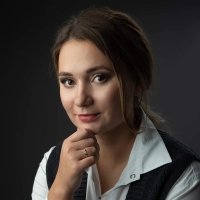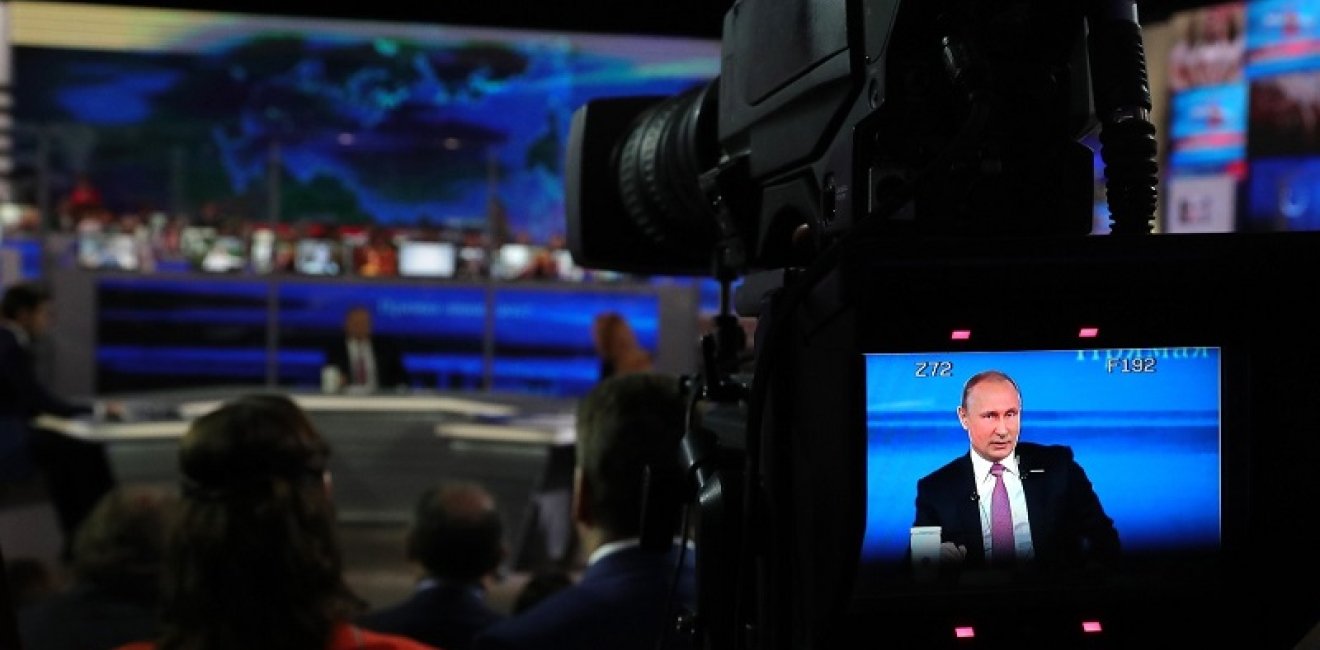
A blog of the Kennan Institute
BY OLGA IRISOVA
Russia’s state-run media have heavily influenced Russians’ worldview. The techniques of agenda setting, framing, and the provision of disinformation are staples in the Kremlin’s toolkit. Yet recent protests in Yekaterinburg and their denouement appear to have tested the efficacy of such time-honored tactics and raise questions about the Kremlin’s ability to continue to control the narrative surrounding news events.
In mid-May, groups of residents took to the streets in protest of a plan to build a church in one of Yekaterinburg’s city parks. The sore spot seemed to be control of one of the few green spaces in the city. Thousands soon joined the protests, while hundreds of thousands more followed developments on social media or independent local media.
After a tumultuous week of confrontation that resulted in about 100 protesters being detained, the authorities moved to dismantle the fence around the construction site.
The protests began on May 13, and on May 21, people returned to their homes, having won a stay. This victory, though relatively small in scale, highlighted a newfound level of citizen participation and exposed certain fault lines in the Kremlin’s media manipulation techniques. For though the Kremlin media deployed their best forces during the demonstration, they may have found that certain propaganda techniques are no longer effective and could even backfire.
Selective Coverage As a Means of Controlling the Narrative
Although the number of Russians who consider TV an important source of information is gradually declining (from 86 percent in July 2016 to 72 percent in 2019, according to the Levada Center, an independent polling organization), a sizable number of those polled say they receive most of their information about the outside world from TV news.
The Yekaterinburg protests originally did not get much airtime on either of Russia’s two main television channels, Channel One and Russia 1. To be sure, other local protests, such as the ongoing protests in Arkhangelsk this spring to reject another landfill and the March demonstrations in Ingushetia protesting a border deal with Chechnya, did not receive any discernible coverage on Russian domestic television. However, silencing the events in Yekaterinburg proved impossible. Independent media, local bloggers, and the participants themselves provided so much coverage that the Kremlin could not keep the goings-on under wraps. State-run media had to choose their second-best option, which was to try to seize the initiative in shaping public perceptions of the story as it unfolded.
Channel One, partly owned and editorially controlled by the state, was the first to carry information about the protests in Yekaterinburg, after a delay of 24 hours from the start of the protests. An evening news item on May 14, which occupied less than a minute of airtime, mentioned that the city’s residents were complaining about the construction of a cathedral in a park and that the local governor had called on them to resolve the dispute peacefully.
Russia 1, the other large television channel and one fully owned by the state, mentioned Yekaterinburg only on May 16, in the aftermath of President Vladimir Putin’s speaking out on the matter. A showdown between the protesters and some mixed martial arts practitioners, apparently hired by an investor in the development, was not mentioned. (The St. Catherine Foundation, which is responsible for the project, is owned in equal proportions by the largest shareholder of the Russian Copper Company, Igor Altushkin, and the president of the Ural Mining and Metallurgical Company, Andrey Kozitsin.)
Instead of the Yekaterinburg demonstrations, developments in Ukraine dominated the news cycle during the week of protests, which is normal for any week on Russian television. When Channel One and Russia 1 did mention the protests, they focused on comments by Putin, local authorities, and representatives of the Russian Orthodox Church. No airtime was given to opponents of the construction, nor was any information provided about those detained or about the protestors’ motivations. The picture presented to viewers was that some people complained about a construction project and Putin intervened to resolve the conflict. The beatings, the detentions and arrests, the angry exchanges between the authorities and the protesters, who often chanted political slogans and wielded signage, were completely omitted.
Advancing the President’s Image As Wise Conflict Arbiter
On May 16, when the protests had been in full swing for three days, both Channel One and Russia 1 carried stories about a media forum in the course of which Putin had briefly addressed the Yekaterinburg story. Putin suggested that an opinion survey of local resident as to the disputed site was in order. The state-run media portrayed Putin as a wise peacemaker who listens to the voice of the people. They cast Putin in a favorable light and contrasted him with the regional authorities, who, unlike the president, were not able to “listen to the opinion of the people and prevent conflicts from arising,” a host pointed out.
On May 17, Channel One informed its viewers that the construction of the cathedral in Yekaterinburg had been suspended and an opinion survey was being prepared. Reports emphasized that “the idea of conducting the survey did not originate with the Yekaterinburg officials and had been proposed by Putin instead.” On the one hand, the message cemented the image of Putin as a just leader and wise arbiter. On the other hand, it unwittingly emphasized the instability of the system, which works only when the president intervenes.
The Kremlin media strategists seem oblivious to that fact that Putin’s approval ratings are nowhere near their 2014 highs and that Russia’s citizens blame Putin personally for their dwindling incomes. For years, Russians were told that the system rested on the authority of one man. The full implications of that trope seem finally to be dawning on large parts of the population: Putin is responsible not just for Moscow’s victories but for Russian citizens’ woes, too.
Conspiracy Theorists Offer the Usual Excuses
Russian media strategists frame every problematic occurrence as an evil conspiracy whose outcome can only harm the state and Russian citizens. For example, the host of the weekly show Tolstoy. Sunday (a name that puns on the title of Leo Tolstoy’s novel Resurrection, as the Russian words for “Sunday” (voskresenye) and “resurrection” (voskreseniye) sound very similar; the show’s host is related to the writer Tolstoy) informed his audiences that the conflict was not about citizens protesting a church construction but about two major development companies competing with each other.
The trope of the hostile West was not forgotten either. The staunchly pro-Kremlin radio and TV host Vladimir Solovyov suggested on one of his shows that the protests in Yekaterinburg went “according to the manuals.” That catchphrase usually signals that the events in question were planned by some Western masterminds. The protests were “an attempt to stage a Maidan in the center of Russia” and a “mockery of Eastern Orthodoxy by American agents of influence,” Solovyov said. “The demons who protested in the park in Yekaterinburg,” Solovyov suggested, were somehow connected to the United States. “Is it a coincidence that all this happened right at the time of Pompeo’s visit?” he inquired, referring to a recent visit by the U.S. secretary of state Mike Pompeo to the Russian resort city of Sochi.
“What would you say to the fact that one of the organizers of the protests is a top manager at an American holding?” Solovyov continued, apparently referring to the company Hearst Shkulev Media, which owns a local website whose executive took part in the protests. To be clear, Russian legislation caps foreign ownership of media at 20 percent, and that is exactly the stake an American partner company owns in Hearst Shkulev Media, which is majority owned by Viktor Shkulev, a Russian media entrepreneur.
The right-wing website Tsargrad also cited an American connection, calling Rinat Nizamov, the Hearst Shkulev executive, “the right and the left hand of the U.S. in the Urals.” Tsargrad went even further, quoting Sergei Gavrilov, a Duma MP, as saying that “‘color revolution” techniques were being tested in crucial parts of Russia and the pretexts [for such tests] can be very different,” giving as examples Aeroflot’s Superjet crash and the construction of the cathedral in Yekaterinburg.
Dismissing protests by portraying their participants as puppets of the United States used to be a fairly effective way of discrediting the Kremlin’s opponents, but with the growth of local protests, and particularly the ability to organize on social media, more and more people not especially politically active may suddenly find their struggles against local injustice portrayed as “working for the West.” But in the current shaky economic conditions, labeling earnest local-issue activists who have no political agenda American puppets may backfire. Such a stance may cause people familiar with local grievances to find themselves capable of mobilizing in the face of Moscow’s lies.
Extension of Political Power As a Means of Controlling the Narrative
The Kremlin-controlled information space is essentially an extension of its political power. It largely designs a cognitive framework that must be taken into account when analyzing public behavior and attitudes. According to the official discourse, Stalin led the people to victory in the Great Patriotic War. This, not the Russians’ pining for tyranny, explains the normalization of Stalin’s image in Russian public opinion.
However, if we analyze the information about Stalin that ordinary Russians possess (through content analysis of media statements and politicians’ public rhetoric, social polls on awareness of the scale of repressions, and the like), we get a completely different picture. The scale of Stalin’s crimes has been purposefully whitewashed out of the social memory of Russians for quite some time. As focus groups and surveys show, many Russians see Stalin not as a murderous tyrant but as a “wise leader who led the Soviet Union to power and prosperity,” “a fighter against corruption,” “a firm hand,” and “the one who put the country in order.”
But the strength of the Kremlin’s propaganda tactics appears to be fading. Ginning up anti-Western sentiment, a reliable tool in the past, has not succeeded in tamping down growing dissatisfaction with the socioeconomic situation in Russia and ubiquitous corruption. Moreover, the events in Yekaterinburg proved that local independent media, journalists, and bloggers are more flexible than the Kremlin propaganda machine. Activists are ready to stream 24/7 using all platforms available, and with them, reaching young audiences, the segment of Russian society that the Kremlin generally fails to address effectively.
The framing employed by the Kremlin in covering protests—with very little attention paid to the main event, all attention given to decisions of the federal center, and the protestors portrayed as agents of the West—worked quite effectively in the past. However, with the deterioration in the domestic economic situation, an increase in local protests, and the skillful use of social media for “soft,” moment-by-moment organizing, such a media agenda design does not end up executing in the interests of the Kremlin. Russia’s pro-government media are sclerotic and stuck in a period of post-Crimean euphoria that by all indicators has already ended.
Author

Political Analyst, Cofounder, and Editor-in-Chief, "Riddle"

Kennan Institute
After more than 50 years as a vital part of the Wilson Center legacy, the Kennan Institute has become an independent think tank. You can find the current website for the Kennan Institute at kennaninstitute.org. Please look for future announcements about partnership activities between the Wilson Center and the Kennan Institute at Wilson Center Press Room. The Kennan Institute is the premier US center for advanced research on Eurasia and the oldest and largest regional program at the Woodrow Wilson International Center for Scholars. The Kennan Institute is committed to improving American understanding of Russia, Ukraine, Central Asia, the South Caucasus, and the surrounding region through research and exchange. Read more

Explore More in The Russia File
Browse The Russia File
Chechnya as a Model of Modern Russia

Russia’s Indigenous Communities and the War in Ukraine

Gas and Power in a Changing US–Russia Relationship

